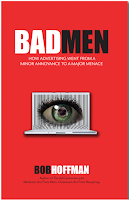April 20, 2015
How Marketers Lie To Themselves
Anyone who has spent time in advertising knows that there are very few things in this world as unreliable as the numbers we throw around.
Our industry is so poorly trained in mathematics and statistics, we can be fooled by the most elementary of statistical manipulations and misrepresentations.
But our denseness about numbers is often as much about self-delusion as it is about ignorance. Often, we want to believe the lies we tell ourselves.
I remember not long ago -- during The Great QR Code Scare Of 2012 -- I was finding the following statistic being bandied about: "60% of people say they use QR codes."
This statistic was obviously total bullshit, and yet serious people seemed to be taking it seriously. Anyone who spent any time in the real world could see that no one was using QR codes. Yet this stat kept popping up to justify the implementation of this dimwit technology.
It was pretty clear to me what was going on. Someone did a survey: "Have you ever used a QR code?" 60% of some sample said yes. This lead to enormous misrepresentation and misunderstanding.
Here's how it happens. Let's say you ask people the following question: Have you ever eaten a snail? And 60% of the people say they have. Then you create a sentence -- "60% of Americans say they eat snails."
Even though the incidence of eating a snail may be once in a lifetime, the sentence in question appears to make the eating of snails a regular occurrence.
The same with the QR code. If 60% of consumers used a QR code once, the actual incidence of using a QR code while shopping might be one in a hundred thousand.
But by structuring the sentence to say, "60% of people say they use a QR code" instead of "the incidence of QR code use among shoppers is one in a hundred thousand" a truth is technically being told, but reality is being radically misrepresented.
While we in the marketing business often use slippery words and sentence structures to put a happier face on our communication to consumers, we don't realize how frequently this trick is used on us.
When an entire industry wants to believe, there is no better time to be skeptical.
Subscribe to:
Post Comments (Atom)





8 comments:
Statistics can be contorted to conclude almost anything one chooses to prove. For example, for safety reasons, when you fly, always bring a bomb on the plane with you as the odds of two people bringing a bomb on the same plane are infinitesimal.
I amuse myself with a vision of Michael Roth trying this, especially considering the whole TSA-sends-him-to-PMITA-prison part of the scenario.
I clicked on a banner ad once. It was inadvertent, but I guess there's nothing I can now do to remove myself from the subset of people who are willing to interact with ads.
I even remember reading something a few weeks ago about television viewership going up, since there are more households with TVs than there were before. Although fewer and fewer people are actually using those devices like "TVs". Silly marketers will believe anything.
Really? Television viewership going up? I wonder if you really read that or if, perhaps, you are using "slippery words and sentence structures."
Absolutely. But I think it goes a touch deeper than merely math & statistics (and I think I get to say that since i have a couple of math degrees).
There's a disciplined approach to reading and interpreting research that seems entirely lost on the ad business (at least - for a large majority).
There's a hierarchy worth bearing in mind:
Data is not information.
Information is not knowledge.
Knowledge is not insight.
Insight is not wisdom.
Poorly framed and constructed research is the bane of the industry.
Misrepresented data is its ugly step-child.
People who don't know any better do it all the time. People who should know better (research professionals) also do it.
And when in doubt, add a decimal place for added credibility. After all, everyone knows that 76.4% of all statistics are made up.
I've had research agencies present survey results to me - based on a sample of 100 - that had decimal places in the data. I've asked them, how exactly does six tenths of a person answer a question?
Agreed (and sorry to intrude on your point but...) there's a disciplined approach to reading and interpreting research that seems entirely lost on the research business as well.
Post a Comment